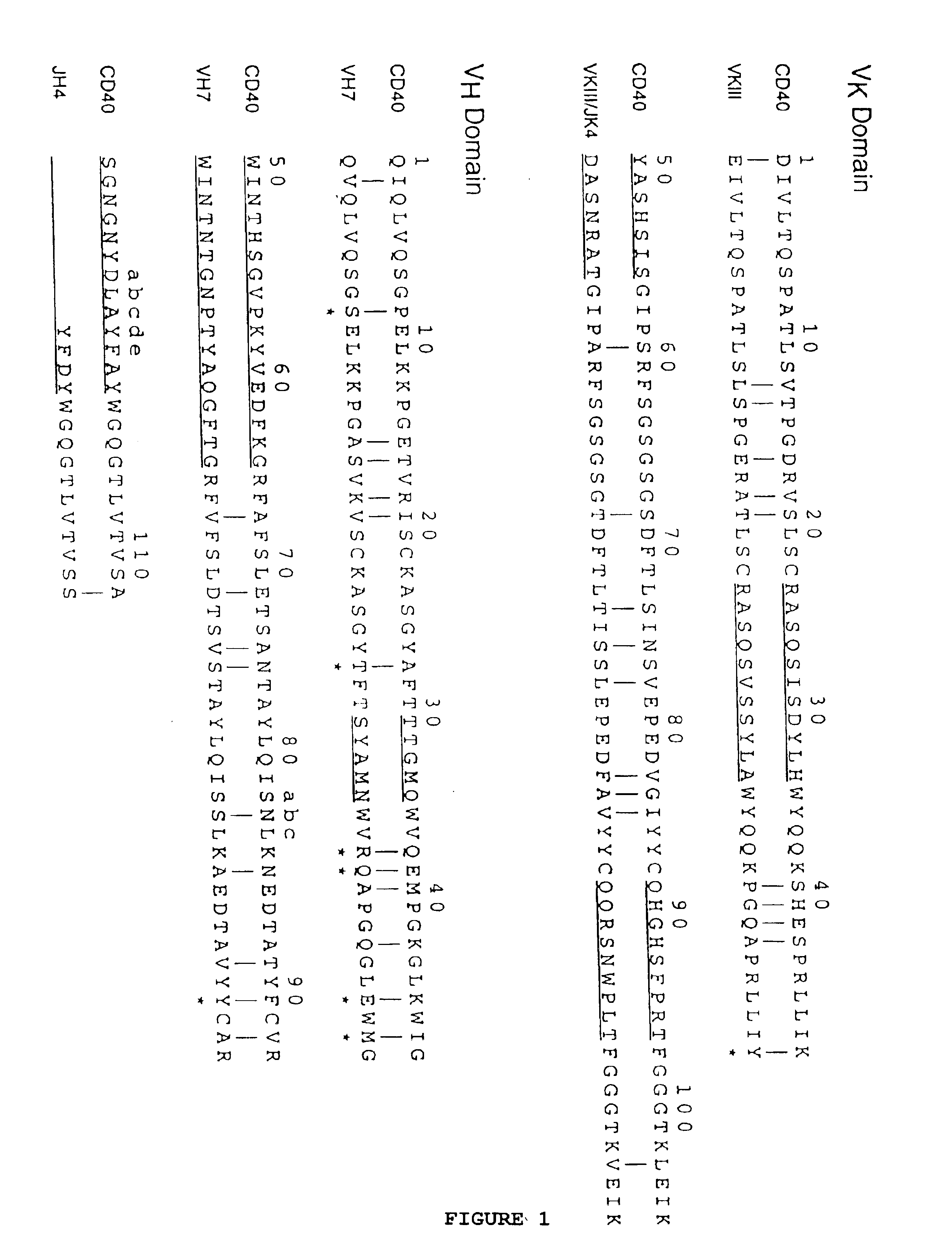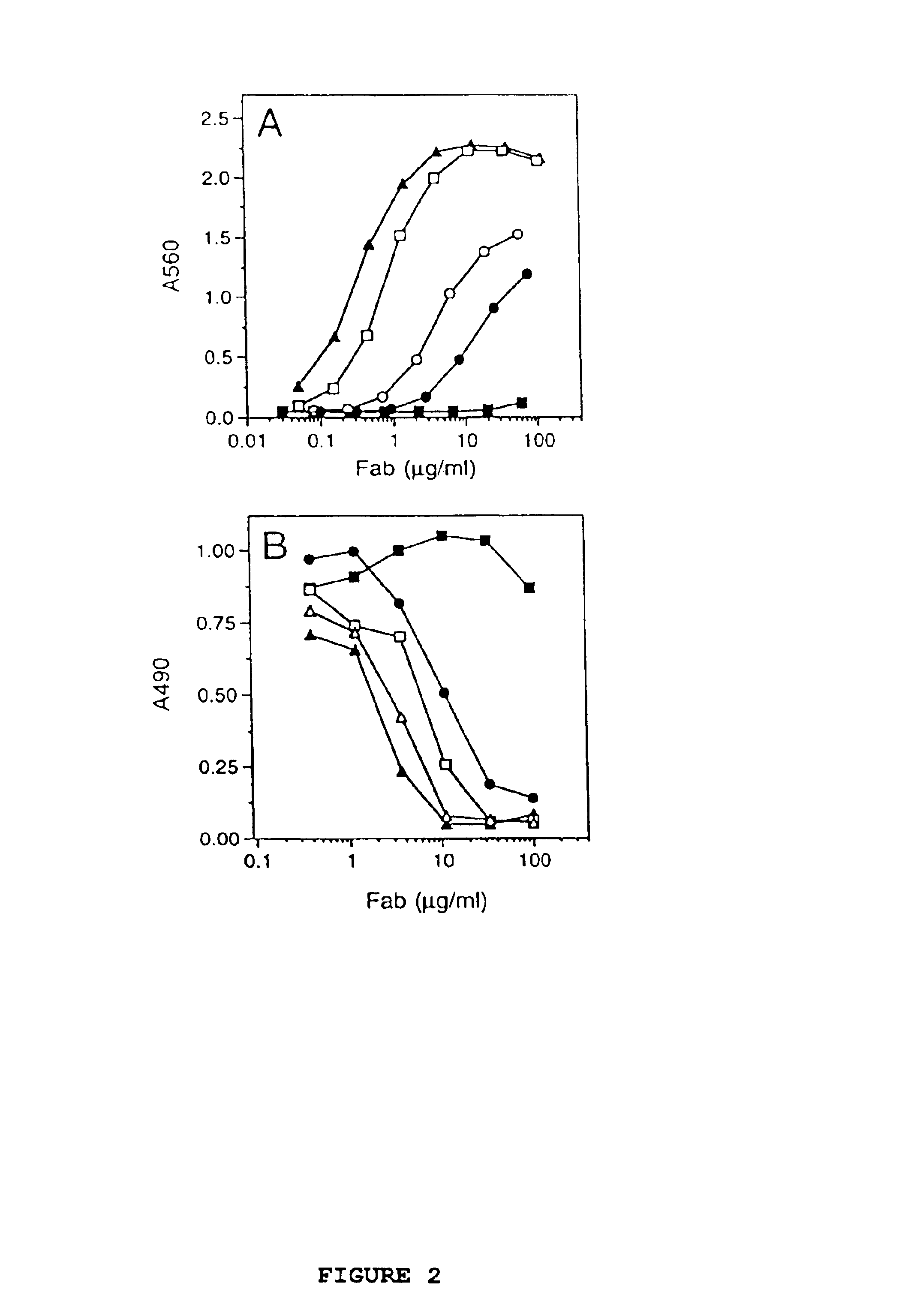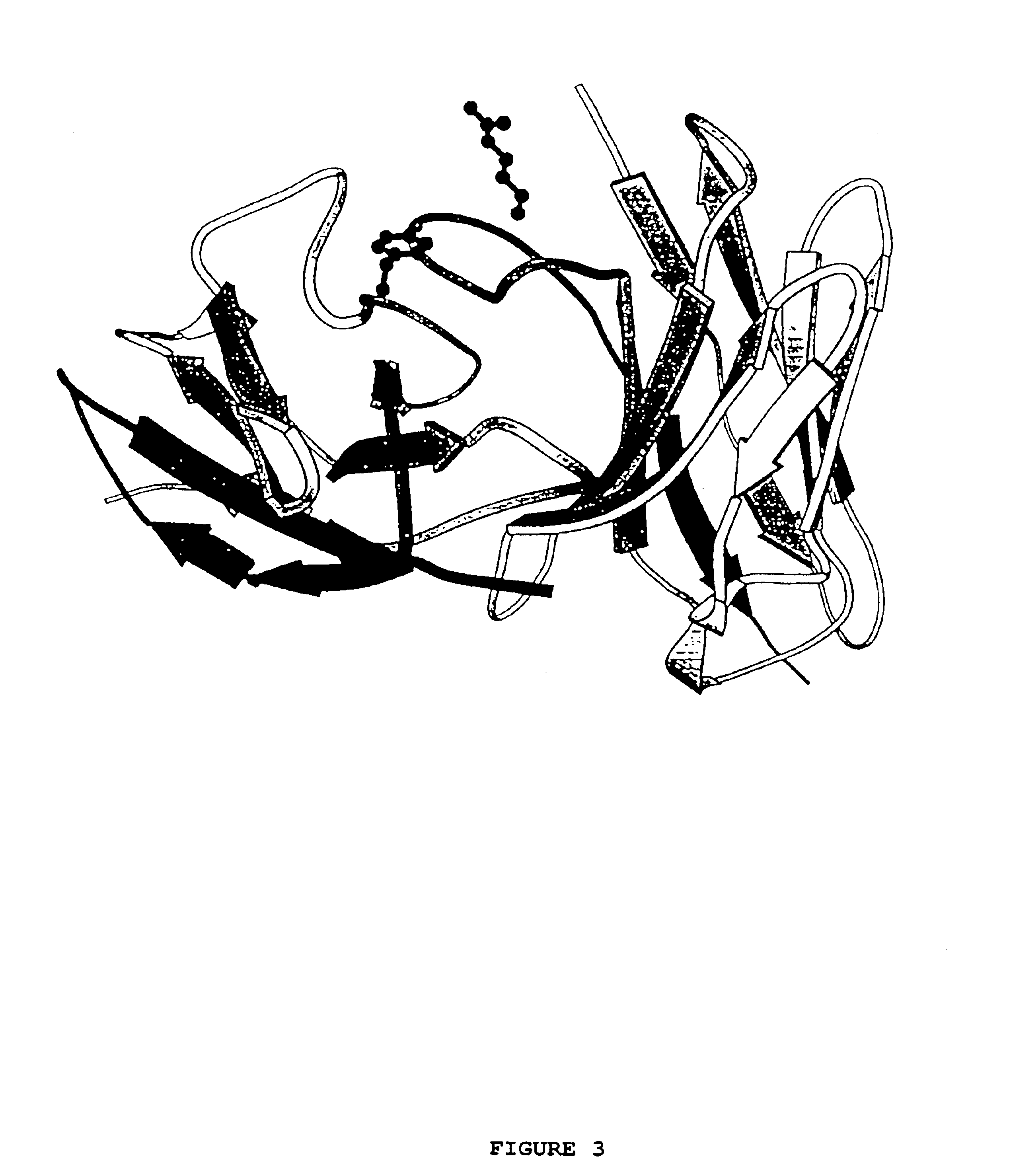Methods of optimizing antibody variable region binding affinity
a variable region and binding affinity technology, applied in the field of monoclonal antibody production, can solve the problems of eliciting an immune response, affecting the effect of antibody production, and limiting the use of therapeutic entities, etc., and achieve the effect of optimizing the binding affinity of an antibody variable region
- Summary
- Abstract
- Description
- Claims
- Application Information
AI Technical Summary
Problems solved by technology
Method used
Image
Examples
example i
Simultaneous Humanization and Affinity Maturation of an Anti-CD40 Antibody
[0088]This example shows the simultaneous humanization and affinity maturation of the murine mAb 40.2.220, directed against the CD40 receptor.
[0089]The CD40 receptor is a potential therapeutic target for several diseases. For example, the interaction of the CD40 receptor and its ligand, gp39, serves a critical role in both humoral and cell-mediated immune responses (Foy et. al., Annu. Rev. Immunol. 14:591-617 (1996)). Immunological rejection of organs from genetically non-identical individuals, termed graft-versus-host-disease (GVHD), is mediated through T cell-dependent mechanisms. In vivo administration of an anti-gp39 mAb blocks GVHD in mice and inhibits many of the GVHD-associated phenomena (Durie et. al., J. Clin. Invest. 94:1333-1338 1994)), providing evidence that the CD40 / gp39 interaction plays a critical role in the development of GVHD. More recently, inhibition of the CD40 / gp39 interaction in vivo in...
PUM
| Property | Measurement | Unit |
|---|---|---|
| temperature | aaaaa | aaaaa |
| pH | aaaaa | aaaaa |
| pH | aaaaa | aaaaa |
Abstract
Description
Claims
Application Information
 Login to View More
Login to View More - R&D
- Intellectual Property
- Life Sciences
- Materials
- Tech Scout
- Unparalleled Data Quality
- Higher Quality Content
- 60% Fewer Hallucinations
Browse by: Latest US Patents, China's latest patents, Technical Efficacy Thesaurus, Application Domain, Technology Topic, Popular Technical Reports.
© 2025 PatSnap. All rights reserved.Legal|Privacy policy|Modern Slavery Act Transparency Statement|Sitemap|About US| Contact US: help@patsnap.com



